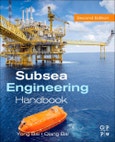Please Note: This is an On Demand product, delivery may take up to 11 working days after payment has been received.
Table of Contents
Part I: Subsea Engineering 1. Overview of Subsea Engineering 2. Subsea Field Development 3. Subsea Distribution System 4. Subsea Surveying, Positioning and Foundation 5. Installation and Vessels 6. Subsea Cost Estimation 7. Subsea Control 8. Subsea Power Supply 9. Project Execution and Interfaces
Part II: Subsea Integration and Safety 10. Subsea LDS and Safety 11. Subsea Risk and Reliability 12. Subsea Equipment RBI 13. Subsea Equipment QRA
Part III: Subsea Flow Assurance 14. Subsea System Engineering 15. Hydraulic 16. Heat Transfer and Thermal Insulation 17. Hydrates 18. Wax and Asphaltenes 19. Subsea Corrosion and Scale 20. Erosion and Sand Management 21. Multiphase Flow Loop Design
Part IV: Subsea Equipment and Structures 22. Subsea Manifold 23. Pipeline Ends and In-line Structures 24. Subsea Connections and Jumpers 25. Subsea Wellheads and Trees 26. ROV Intervention and Interface 27. Subsea Valves 28. Subsea Processing and Boosting Equipment
Part V: Subsea Risers and Umbilicals 29. Subsea Umbilical Systems 30. Drilling Risers 31. Subsea Production Risers 32. Subsea Pipelines
Part VI: Design, Manufacture, and Test Examples 33. Subsea Manifold Design Case Study 34. Subsea Tree Design Case Study 35. Subsea Control








